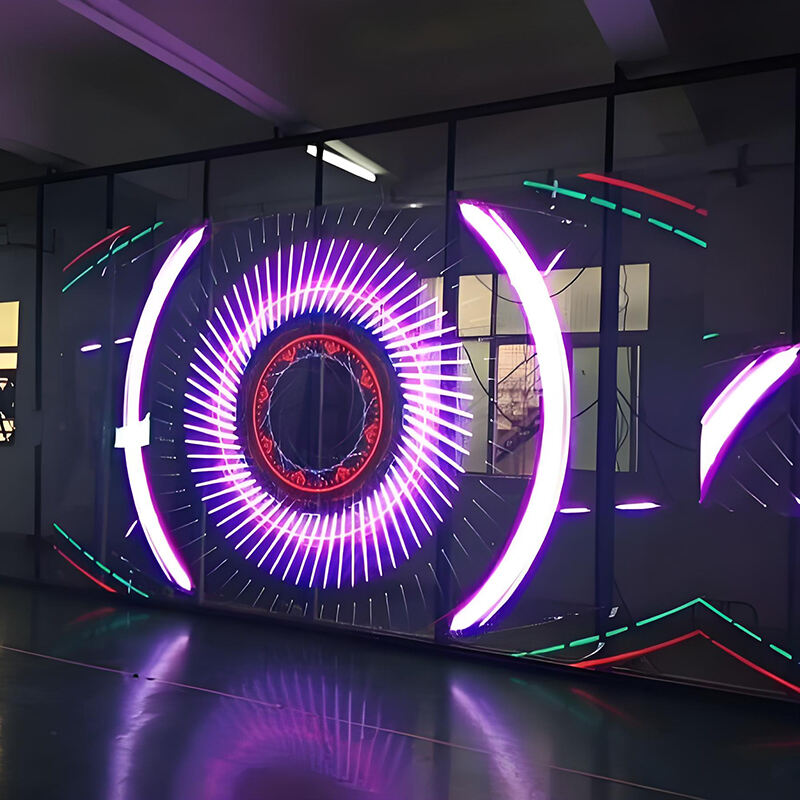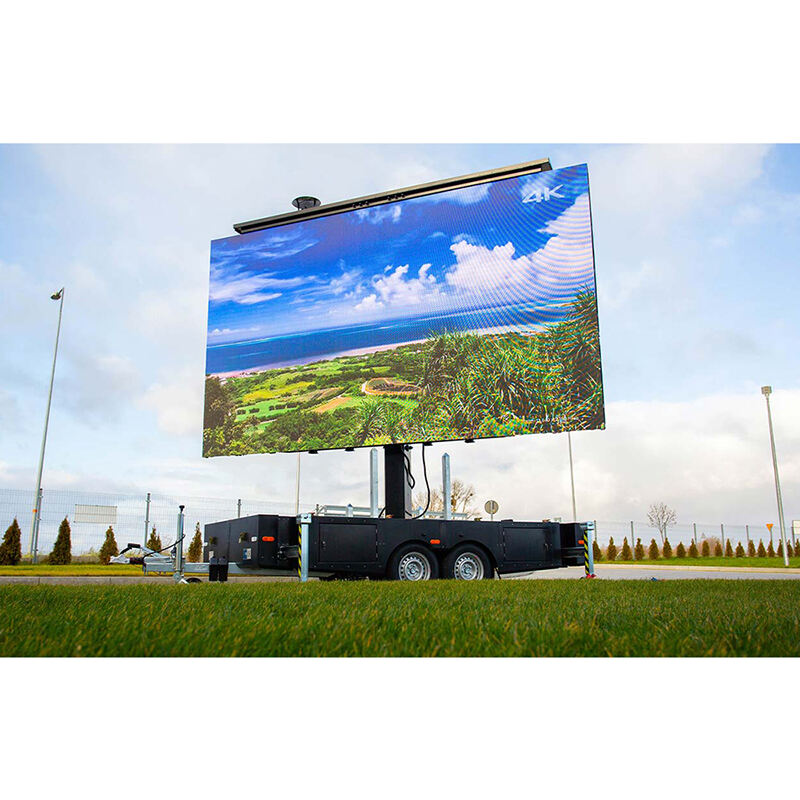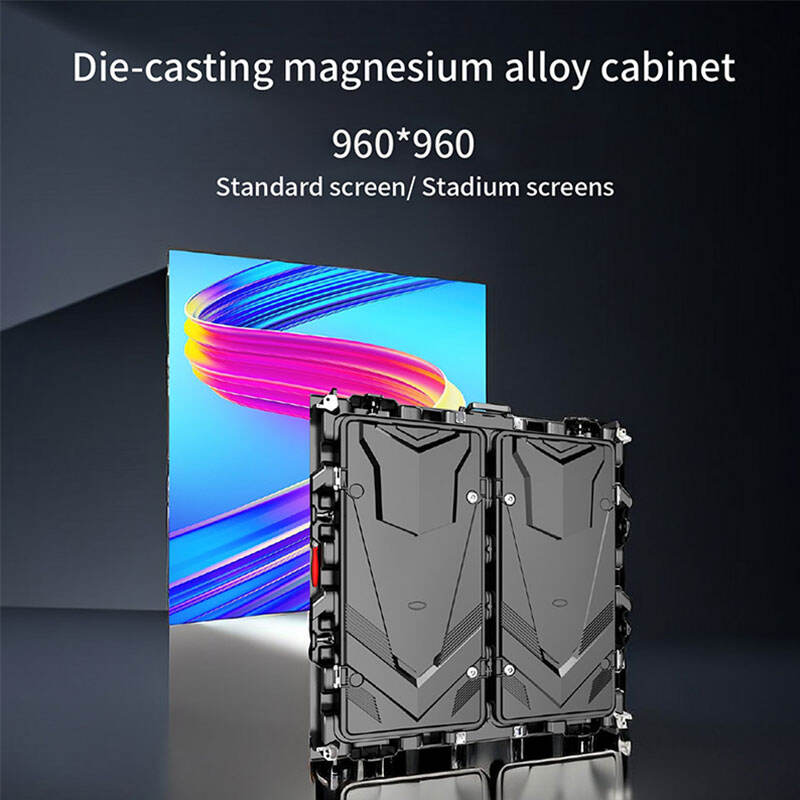Understanding the Core Difference: LCD vs LED Display Technology
The role of backlighting technology in LED and LCD displays
LCD and LED screens work similarly since they both rely on liquid crystals for image formation, though they're quite different when it comes to lighting. Older LCD monitors typically have those cold cathode fluorescent lamps tucked behind the display panel. Newer LED versions instead utilize those much more efficient little light emitting diodes we all know about these days. The difference makes a real impact on how well they perform. According to some recent data from Spiceworks back in 2023, LED backed LCDs actually use around 40 percent less electricity compared to their CCFL counterparts. Plus they can reach about 30 percent brighter at their brightest setting too. That kind of efficiency matters a lot for anyone concerned about power consumption or picture quality.
How LED backlighting works in LCD TVs
LED-backlit LCD TVs work by using tiny LED arrays instead of those old CCFL tubes we used to see. Manufacturers typically place these LEDs either around the edges of the screen (what they call edge-lit) or spread them out behind the entire display panel (known as full array). The full array arrangement is pretty cool because it allows for something called local dimming. Basically, different sections of LEDs can brighten or darken on their own, which makes the picture look much better with greater contrast. Think about watching a scene at night under the stars. With this technology, just the parts showing stars stay lit up, while everything else goes dark. This creates much deeper black levels compared to the old uniform lighting from CCFL backlights that couldn't do this kind of zonal control.
Why all LED TVs are technically LCDs
The term "LED TV" is basically just a marketing trick these days. What people call LED TVs are actually LCD screens with LED lighting behind them. According to HowStuffWorks, the part that creates images (those liquid crystals) hasn't changed at all. The real difference comes from the light source underneath. When looking at specs side by side, a $700 "LED TV" will beat out a similar priced CCFL-LCD model, but this isn't because the screen panels themselves are any better. Instead, it's all about how well the backlight works and whether it supports HDR features or not. Most consumers don't realize this distinction, but it makes a big difference in picture quality and overall value for money spent on electronics.
| Backlight Type | Power Use (Avg) | Contrast Ratio | Typical Thickness |
|---|---|---|---|
| CCFL (LCD) | 120W | 1,000:1 | 2.5" |
| LED (LCD) | 70W | 5,000:1 | 0.5" |
Data source: DisplaySpecifications 2024
Evolution of LED Backlighting: Edge-Lit, Full-Array, and Mini-LED
Edge-Lit LED Displays: Design, Brightness, and Limitations
In edge-lit LED displays, the diodes are placed along the edges of the screen instead of behind it, which allows for really thin designs sometimes as slim as half an inch or less. This makes them great choices when weight matters, especially for things that need to be mounted on walls or used in portable gadgets. These displays can get pretty bright too, hitting around 700 nits according to DisplayMate's latest report from 2023. However there's a catch with bigger screens where the light doesn't spread evenly across the whole area, causing some parts to look brighter than others by about 25 to 30 percent. Another issue comes from having limited dimming zones, so when watching something dark on screen, bright spots tend to appear around lights or objects, creating what people call "halo" effects. Because of this problem, edge-lit LEDs aren't always the best pick for places where contrast is important, such as dedicated home theater setups.
Full-Array LED Backlighting and Local Dimming Performance
Full array LED backlighting takes things a step beyond edge lit designs because it spreads out hundreds of those little LED lights right behind the actual LCD panel. The really top notch displays have something crazy like over 1,200 separate dimming zones which means they can hit those insane contrast ratios around 1 million to 1 according to SID's 2024 report. What makes this setup so good is how it cuts down on color shifting too, keeping most of the screen looking consistent with shifts below 1.5 Delta E across almost the entire viewing area. There's definitely a trade off though when pushing for higher brightness levels. These panels generate more heat than their counterparts, so manufacturers often need to build in active cooling systems. And guess what? That extra cooling comes at a cost, bumping up power usage anywhere from 15 to 20 percent depending on the model.
Mini-LED Backlighting: Higher Precision and Enhanced Contrast
Mini LED technology is really changing things, with these tiny lights packing anywhere from 5,000 to as many as 25,000 LEDs - each one about 80 percent smaller than regular LEDs. The way they're packed together lets manufacturers create over 2,000 separate dimming areas on screen, which cuts down those annoying halo effects around bright objects by almost two thirds when compared to older full array backlighting systems according to research from NPD Group back in 2024. Today's Mini LED screens can hit brightness levels well past 3,000 nits but still manage to keep black levels incredibly low at under 0.001 cd per square meter, something that actually competes pretty well against OLED panels despite being a different technology altogether. Production does cost roughly 35 to 40 percent more than standard LED LCD manufacturing though, so why has it taken off? Well look at the numbers: sales jumped by an amazing 182 percent last year specifically among professional grade monitors used in industries where accurate colors matter most like graphic design studios and post production facilities.
Mini-LED vs QLED vs OLED: Comparing Brightness, Contrast, and Color Performance
QLED vs OLED: Fundamental Differences in Technology and Image Quality
QLED technology, also known as Quantum Dot LED, takes regular LED-LCD screens to another level by adding a special quantum dot layer that really makes colors pop and increases brightness. These displays can hit brightness levels above 1,500 nits according to TechRadar's 2025 report, which makes them great for watching in well lit spaces. But there's a catch. Since they depend on backlighting, these screens tend to have issues with light bleeding through, so black areas aren't as deep as they could be. Most standard models only manage around 5,000:1 contrast ratio. On the flip side, OLED panels work differently. Each pixel emits its own light and can actually shut off completely when needed. This means truly black blacks and basically unlimited contrast ratios, perfect for movie nights in dimly lit rooms. OLEDs don't get as bright as QLEDs, topping out between 800 and 1,000 nits, but what they lack in raw brightness they make up for with consistently accurate colors even when the brightness drops down.
Where Mini-LED Stands in the Display Hierarchy: Advantages Over QLED and OLED
Mini LED technology sits somewhere between QLED and OLED displays, packing in around 10,000 tiny LEDs that are actually 40 times more densely packed compared to regular full array backlighting systems. These little lights allow for really precise dimming across approximately 2,000 different zones on screen. The result? Contrast ratios reaching as high as 1 million to 1, which is pretty much what OLED can do according to recent tests from CNET in 2024. But unlike OLED panels, there's no need to worry about image retention issues when watching static content for long periods. When manufacturers pair these mini LEDs with quantum dot filters, top end models hit about 98% coverage of the DCI P3 color space and maintain brightness levels around 2,000 nits. That's roughly 60% better than standard QLED offerings. For anyone dealing with mixed lighting environments at home or in professional settings, this hybrid approach offers some serious advantages without breaking the bank completely.
HDR, Color Gamut, and Peak Brightness in Modern LED Display Types
High Dynamic Range (HDR) performance highlights key differences:
- Mini-LED handles 4,000+ dimming zones in premium models, rendering details from 0.0001 nits to 2,000 nits within a single frame
- QLED retains color fidelity up to 1,700 nits but loses shadow detail below 0.05 nits
- OLED achieves perfect blacks but caps sustained HDR output at 200 nits to prevent degradation
Recent improvements in Mini-LED backlighting now support 95% Rec.2020 color space coverage—15% beyond first-gen QLED. Lab tests from 2024 show Mini-LED outperforms OLED in environments above 500 lux while matching its contrast in dark rooms (CNET 2024).
Evaluating Picture Quality: Contrast, Color Accuracy, and Real-World Performance
Contrast Ratios and Black Level Performance Across LED Display Types
Today's LED screens come with contrast ratios ranging anywhere between around 1,000 to 1 for the cheaper models all the way up past 5,000 to 1 for those premium full array ones that have local dimming features. These higher numbers really make a difference when watching movies or games with HDR content since they create much better depth perception. A common issue with edge lit panels though is something called backlight bleeding that happens along the edges of the screen, making dark scenes look less impressive than they should be. Mini LED technology helps fix this problem by allowing much finer control over where light gets dimmed across the panel. According to various tests conducted recently, full array displays manage to keep about 97 percent consistent contrast while playing back 4K content, whereas edge lit alternatives only hit roughly 81 percent consistency. That kind of gap makes a noticeable difference for serious viewers who want their images to pop without unwanted artifacts ruining the picture quality.
Color Reproduction and Accuracy in Professional and Consumer Applications
Top shelf LED screens these days can handle pretty broad color ranges including DCI-P3 and Adobe RGB standards. Some QLED and Mini-LED models actually reach around 98% coverage of the DCI-P3 spectrum which is impressive stuff. But here's the catch - factory settings aren't always spot on. The color accuracy difference (that ÎE number designers talk about) can swing between really good at 0.8 for those high end studio monitors all the way up to 3.2 in regular consumer grade displays. Most professionals need that ÎE value below 1.5 if they want their printed work to match what appears on screen, something usually fixed through proper hardware calibration. Looking at recent trends from the 2024 Visual Design Industry Report, roughly seven out of ten creative agencies seem to look first for monitors that come with built-in support for common color spaces like sRGB, P3, and Rec.709 profiles right out of the box.
Picture Quality Comparison: Choosing the Best LED Display for Your Needs
| Use Case | Key Requirements | Recommended Type |
|---|---|---|
| Home Theater | High peak brightness (1,200+ nits), local dimming | Mini-LED or QLED |
| Graphic Design | ÎE <1.5, factory calibration | Full-array with 10-bit panel |
| Gaming | 120Hz+ refresh rate, <5ms response | Edge-lit with VRR support |
For mixed usage, Mini-LED offers the best balance—delivering 85% of OLED’s contrast at 60% lower cost while avoiding burn-in risks. Content creators should prioritize 100% sRGB coverage and hardware calibration, whereas casual viewers benefit most from motion-enhancing features like MEMC.
Frequently Asked Questions
What is the primary difference between LCD and LED displays?
The primary difference lies in the backlighting technology. LCD uses cold cathode fluorescent lamps (CCFL) while LED uses efficient light-emitting diodes.
Why are all LED TVs technically LCDs?
"LED TV" is a marketing term. LED TVs are actually LCD TVs with LED lighting for backlighting purposes.
How does edge-lit LED differ from full-array and mini-LED?
Edge-lit LED places light-diodes along the screen edges for thinner designs, while full-array spreads LEDs behind the screen for better contrast through local dimming. Mini-LED packs more LEDs for enhanced precision and contrast.
What advantages does mini-LED have over QLED and OLED?
Mini-LED offers precise dimming with thousands of zones, better contrast ratios, and avoids OLED's burn-in issues while being more cost-effective compared to QLED.
Which type of display is best for different applications?
Home theaters benefit from Mini-LED or QLED for brightness and dimming, graphic design needs full-array with calibration, and gaming requires edge-lit with high refresh rates and VRR support.












